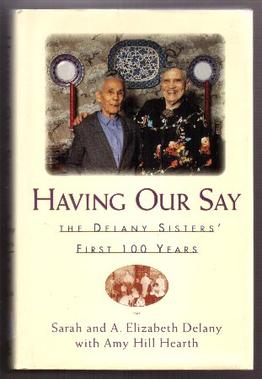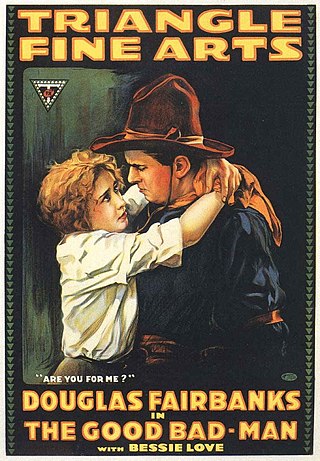Related Research Articles

Edward Franklin Albee III was an American playwright known for works such as The Zoo Story (1958), The Sandbox (1959), Who's Afraid of Virginia Woolf? (1962), A Delicate Balance (1966), and Three Tall Women (1994). Some critics have argued that some of his work constitutes an American variant of what Martin Esslin identified and named the Theater of the Absurd. Three of his plays won the Pulitzer Prize for Drama and two of his other works won the Tony Award for Best Play.

Bessie Smith was an African-American blues singer widely renowned during the Jazz Age. Nicknamed the "Empress of the Blues", she was the most popular female blues singer of the 1930s. Inducted into the Rock and Roll Hall of Fame in 1989, she is often regarded as one of the greatest singers of her era and was a major influence on fellow blues singers, as well as jazz vocalists.

Bessie Love was an American-British actress who achieved prominence playing innocent, young girls and wholesome leading ladies in silent and early sound films. Her acting career spanned nearly seven decades—from silent film to sound film, including theatre, radio, and television—and her performance in The Broadway Melody (1929) earned her a nomination for the Academy Award for Best Actress.

Phylicia Rashad is an American actress. She is dean of the College of Fine Arts at Howard University and best known for her role as Clair Huxtable on the sitcom The Cosby Show (1984–1992) which earned her Emmy Award nominations in 1985 and 1986. She also played Ruth Lucas on Cosby (1996–2000). She was dubbed "The Mother of the Black Community" at the 2010 NAACP Image Awards.

Linda Hopkins was a Tony Award-winning American actress and blues and gospel singer. She recorded classic, traditional, and urban blues, and performed R&B and soul, jazz, and show tunes.
John Howard Lawson was an American writer, specializing in plays and screenplays. After starting with plays for theaters in New York City, he worked in Hollywood on writing for films. He was the first president of the Writers Guild of America, West after the Screen Writers Guild divided into two regional organizations.

Reverend Gary Davis, also Blind Gary Davis, was a blues and gospel singer who was also proficient on the banjo, guitar and harmonica. Born in Laurens, South Carolina and blind since infancy, Davis first performed professionally in the Piedmont blues scene of Durham, North Carolina in the 1930s, then converted to Christianity and became a minister. After moving to New York in the 1940s, Davis experienced a career rebirth as part of the American folk music revival that peaked during the 1960s. Davis' most notable recordings include "Samson and Delilah" and "Death Don't Have No Mercy".

John Galen Howard was an American architect and educator who began his career in New York before moving to California. He was the principal architect at in several firms in both states and employed Julia Morgan early in her architectural career.

Bessie Barriscale was an American actress who gained fame on the stage and in silent films.

Bronson Crocker Howard was an American dramatist.
The Death of Bessie Smith is a one-act play by American playwright Edward Albee, written in 1959 and premiered in West Berlin the following year. The play consists of a series of conversations between Bernie and his friend Jack, Jack and an off-stage Bessie, and black and white staff of a whites-only hospital in Memphis, Tennessee on the death date of the famous blues singer, Bessie Smith, who died in a car wreck.

The Rabbit's Foot Company, also known as the Rabbit('s) Foot Minstrels and colloquially as "The Foots", was a long-running minstrel and variety troupe that toured as a tent show in the American South between 1900 and the late 1950s. It was established by Pat Chappelle, an African-American entrepreneur in Tampa, Florida.
Rainbow Quest (1965–66) was a U.S. television series devoted to folk music and hosted by Pete Seeger. It was videotaped in black-and-white and featured musicians playing in traditional American music genres such as traditional folk music, old-time music, bluegrass and blues. The show's title is drawn from the lyrics of the song by Seeger "Oh, Had I A Golden Thread".

Having Our Say: The Delany Sisters' First 100 Years is a 1993 New York Times bestselling book that was compiled by Amy Hill Hearth and contains the oral history of Sarah "Sadie" L. Delany and A. Elizabeth "Bessie" Delany, two civil rights pioneers who were born in the late 19th century to a former slave. Their stories were largely unknown until The New York Times reporter Amy Hill Hearth interviewed them for a feature story in 1991, and the popular story was expanded into book form.

The Good Bad-Man is a 1916 American silent Western film directed by Allan Dwan. The film was written by Douglas Fairbanks, and produced by Fairbanks and the Fine Arts Film Company. It stars Fairbanks and Bessie Love.

Vera Michelena was an American actress, contralto prima donna and dancer who appeared in light opera, musical comedy, vaudeville and silent film. She was perhaps best remembered for her starring roles in the musicals The Princess Chic, Flo Flo and The Waltz Dream, her rendition of the vampire dance in the musical Take It from Me and as a Ziegfeld Follies performer.

The Girls He Left Behind Him and The Iron Clad Lover are two 1910 American silent short comedies produced by the Thanhouser Company. Both films were originally released together on a single reel and are two distinct and separate subjects. The Girls He Left Behind Him focuses on a young man, Jack Redfern, who receives a letter from an old sweetheart of his. This prompts him to reminiscence about all the girls he has had affections for on the eve of his wedding. All the old sweethearts of his life then appear at his wedding to wish him well. The Iron Clad Lover concerns two suitors who are vying for the affections of Bessie. Tom, who plays a game of chess with her father, ends up quarreling with him and he is thrown out of the house. The next day, Tom attempts to bring flowers and candy for Bessie's birthday, but is dismissed by the angry father. Tom decides to dress up in a suit of armor and ends up breaking a vase when trying to announce himself. The suit of armor is thrown out and Bessie and the other suitor chase down the junk dealer to free Tom from the suit of armor. Both films were released on December 9, 1910 and were met with positive reviews by The Moving Picture World and the New York Dramatic Mirror. Both films are presumed lost.
Alma Martinez is a Mexican-American actress, stage director, and professor of theatre. She is best known for her roles in film and television shows including the Peabody Award winning drama series The Bridge with Demián Bichir and Diane Kruger and Corridos: Tales of Passion & Revolution with Linda Ronstadt as well as performances on Broadway, Off-Broadway, regional theatre, Mexican and European stages.
The Frederick Douglass Film Company was an early American film production company in Jersey City, New Jersey. It was established in 1916, soon after the pioneering Lincoln Motion Picture Company, by prominent African-American business and professional men from New Jersey. The intent of the founders was to counter anti-African-American films such as The Birth of a Nation (1915) and to improve race relations. It was named after the African-American abolitionist Frederick Douglass.
James H. N. Waring, also known as J. H. N. Waring, was an educator and physician who practiced in Washington, D.C., and Baltimore, Maryland. He implemented trade courses in Baltimore and studied societal pressures on African Americans. During World War II, he treated soldiers at Camp Devens during the Spanish flu epidemic. He sat on the Board of Trustees of his alma mater, Howard University.
References
- ↑ s:7,200 Lost U.S. Silent Feature Films (1912-29) (2021-02-04)/C
- ↑ "History Was Made in 1916 Jersey City with Premiere of Nation's First Fully Black-Produced Independent Moving Picture". NJ.com, New Jersey. 13 March 2023. Retrieved 7 May 2023.
- 1 2 3 4 5 6 7 8 White, Lucien H. (July 20, 1916). "The Colored American. (Winning His Suit.)". The New York Age .
- 1 2 Lupack, Barbara Tepa (2002). Literary Adaptations in Black American Cinema: From Micheaux to Toni Morrison. University Rochester Press. p. 80. ISBN 9781580461030.
- 1 2 3 "The Colored American Winning His Suit (1916)". American Film Institute.
- ↑ "Majestic Theatre". New Jersey City University.